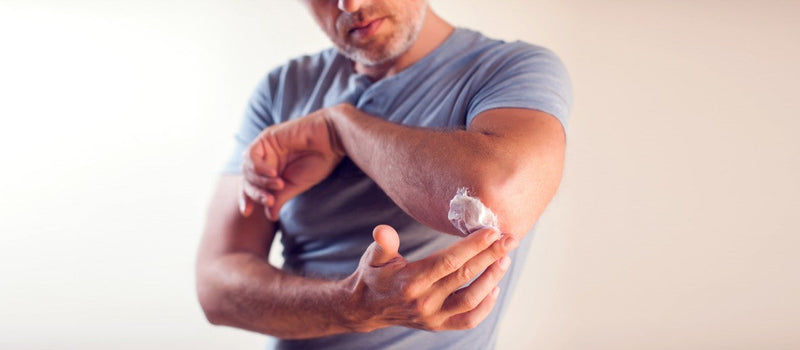

Diabetes increases the risk of skin problems. The conditions are caused by inflammation that results from high blood sugar (glucose) levels. Inflammation can cause skin breakouts and other skin conditions. Among the common skin problems associated with diabetes are:
Dry itchy skin: High blood glucose levels may cause greater loss of fluid from the body leading to dry skin on the legs, elbows, feet and other areas.
Bacterial infections: Diabetes increases the risk of bacterial infections. Infections can lead to swollen, red and painful skin, which requires antibiotics for treatment. Common bacterial infections caused by diabetes include:[1]
- Styes (infections of the glands of the eyelid)
- Boils
- Folliculitis (infections of the hair follicles)
- Carbuncles (deep skin infections and the tissue underneath
- Infections around the nails
Fungal infections: Diabetics are susceptible to fungal infections. A common cause is the yeast-like fungus Candida albicans that thrives in moist and warm folds of skin creating itchy rashes of moist, red areas surrounded by tiny blisters and scales. Common fungal infections include athlete’s foot, ringworm, and vaginal infections
Control diabetic skin problems
Daily skin care regimen: If you are suffering from any of these conditions noted above and also to prevent them from occurring, you’ll want to do the following on a daily basis:
- Keep skin clean and dry.
- Take short lukewarm baths or showers and try not to scrub too hard when bathing or showering.
- Make sure to dry your skin everywhere after washing. Dry well patting gently.
- Check places where water can collect, like under the arms, under the breasts, between the legs, and between the toes since the extra moisture can cause a fungus to grow.
- Treat cuts right away. Wash minor cuts with soap and water. Only use an antibiotic cream or ointment if your doctor says it's okay. Cover minor cuts with sterile gauze. See a doctor right away if you get a major cut, burn, or infection.[2]
- Check your body after you wash for any dry, red, or sore spots that would become infected.
- Check your feet every day for cuts and sores.
- Use a humidifier during winter to add moisture back into the air.
- Moisturize your skin. Best to moisturize right after shower or bath to lock water into your skin.
- If you can’t solve a skin problem by yourself, contact your doctor.
Best skin care products
When it comes to skin care products, keep the following in mind:
Cleansers: Soaps with deodorants and strong body washes can irritate your already sensitive skin. Use a gentle cleanser or one that is specially treated for people with diabetes. It will help soothe skin and prevent complications.[3]
Moisturizers: Choose a fragrance-free lotion, cream or ointment. Avoid products labeled “unscented.” They contain fragrance that has been masked so that you cannot smell the fragrance. [4] Apply them evenly across hands, feet and legs. The best time to apply moisturizer is right after a shower or bath, when skin still is moist.
Sunscreen: Sun exposure can damage your skin’s ability to protect itself. A sunburn can raise your blood sugar levels and also cause dehydration and inflammation. Choose a broad-spectrum sunscreen with an SPF of 30 or higher. Stay out of the sun, if at all possible, but even on cloudy days wear sunscreen. [5]
[1] “Diabetes and Skin Complications,” American Diabetes Association, Accessed March 29, 2022. https://www.diabetes.org/diabetes/skin-complications
[2] Ibid
[3] Dermatologist-Recommended Skin Care for People with Diabetes,” American Academy of Dermatology Association, Accessed March 29, 2022. https://www.aad.org/public/diseases/a-z/diabetes-skin-care
[4] Ibid
[5] Richmond, Christine, “Diabetes and Your Skin,” WebMD, January 11, 2022. https://www.webmd.com/diabetes/diabetes-skin-care








